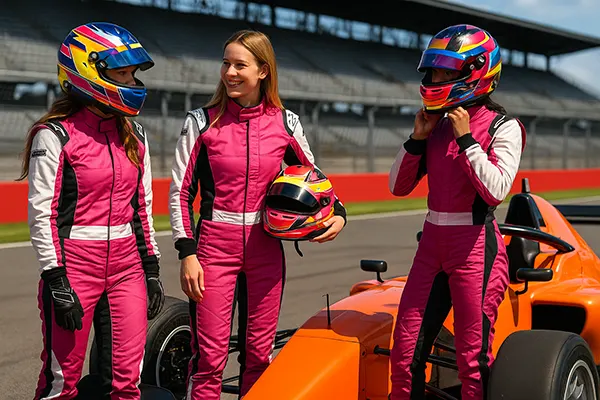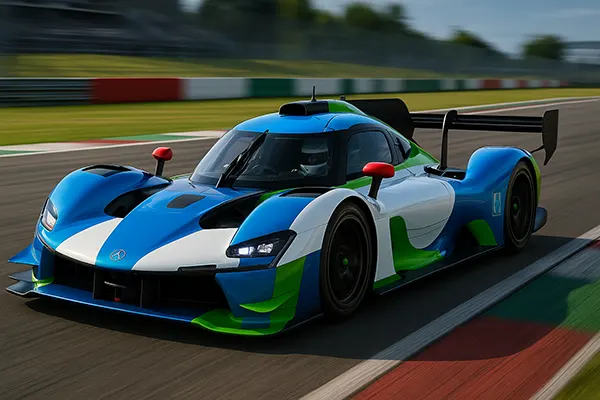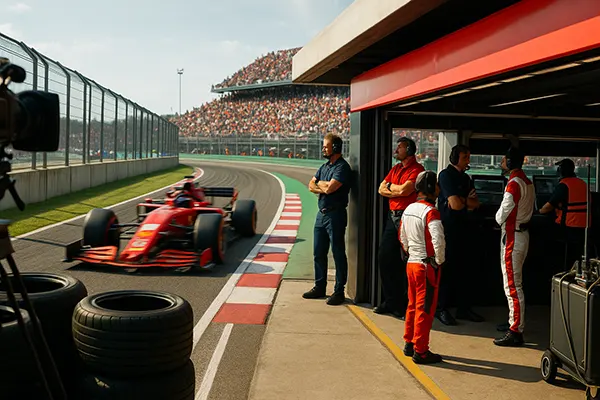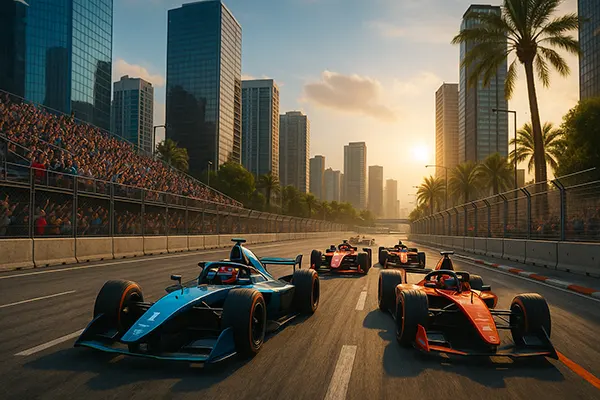Similar articles
Women’s Teams in Motorsport: Realities and Prospects

Motorsport has long been dominated by men, yet the presence of women has been steadily growing over the last few decades. The emergence of female teams and initiatives aimed at supporting women racers represents a shift towards inclusivity and diversity. In 2025, the discussion about the role of women’s teams in motorsport is more relevant than ever, as global competitions and federations highlight the importance of equal opportunities on and off the track.
The Current Landscape of Women’s Motorsport
In recent years, international projects such as the W Series and the F1 Academy have played a crucial role in creating a foundation for women drivers. These initiatives provide structured opportunities for young women to compete at high levels, often serving as stepping stones towards more prestigious championships like Formula 2 and Formula 1. Beyond single-seater racing, women have also established themselves in endurance events, rallying, and karting.
Teams dedicated exclusively to female racers are still rare, but their presence is becoming more visible. Examples include Iron Dames, a professional all-women’s racing project that has competed in events such as the 24 Hours of Le Mans. Such teams not only showcase talent but also challenge stereotypes by demonstrating that women can compete at the same professional level as their male counterparts.
The growing recognition of these teams reflects a broader cultural shift in motorsport. Sponsors, governing bodies, and fans increasingly understand that the involvement of women adds value to the sport, broadening its audience and promoting equality. This recognition, however, comes with the responsibility of ensuring genuine opportunities rather than symbolic participation.
Challenges Faced by Women’s Teams
Despite progress, female teams continue to face significant barriers. One of the main obstacles remains funding, as securing sponsorships for all-women projects is often more challenging compared to traditional teams. Some sponsors are still hesitant, questioning the commercial return, despite clear evidence of rising public interest in diversity initiatives.
Another major challenge is access to the same level of technical resources and infrastructure as men’s teams. In elite motorsport, the difference between winning and losing is often determined by technology, data, and preparation. Women’s teams sometimes operate with smaller budgets, which limits their competitiveness on the global stage.
Finally, cultural and social stereotypes persist, making it harder for women to establish themselves as equals in motorsport. Although attitudes are gradually changing, overcoming bias remains a key part of the long-term strategy to ensure sustainability of female teams.
Success Stories and Positive Momentum
There are several inspiring examples of women’s teams achieving notable results. The Iron Dames, for instance, have not only participated but also secured podium finishes in endurance racing. Their presence has become a symbol of resilience and excellence, inspiring a new generation of drivers to pursue careers in motorsport.
Individual drivers also contribute to changing perceptions. Figures like Susie Wolff, formerly a test driver for Williams F1 and now managing director of the F1 Academy, have shown that women can hold influential positions both behind the wheel and in leadership roles. Their careers demonstrate that progress is possible when talent is supported by institutional structures.
The global motorsport community has responded positively to these milestones, with governing bodies introducing programmes aimed at increasing female participation. By 2025, it is clear that progress is not limited to symbolic actions but extends to real opportunities for women to build lasting careers.
The Role of Mentorship and Development
Mentorship is a key factor in supporting female drivers and teams. Experienced professionals who guide young racers can provide essential insights into competition, sponsorship negotiation, and career management. Initiatives that connect female newcomers with experienced mentors are proving highly effective in developing sustainable pathways.
Development programmes are another crucial element. Karting academies and junior driver initiatives specifically tailored for girls are helping to build foundational skills at an early stage. These structured approaches increase the chances of female drivers progressing into professional levels of competition.
Collaboration between educational institutions, sponsors, and governing bodies ensures that women not only have access to racing opportunities but also to broader motorsport careers such as engineering, data analysis, and team management. This holistic development is critical for long-term progress.

Future Prospects for Women’s Teams
The future of women’s teams in motorsport looks promising, provided that current momentum is maintained. With increased media coverage and dedicated investment, female teams could expand their presence across disciplines including Formula E, endurance racing, and even grassroots competitions. Diversity is no longer an optional discussion but a recognised necessity for the sport’s growth.
One of the biggest prospects lies in integrating women’s teams into mainstream championships rather than keeping them separate. True equality means seeing female drivers and teams competing directly alongside men on equal terms, without being viewed as a side category or an exception.
Technology and sustainability also open new opportunities. As motorsport embraces electric racing and eco-friendly innovations, the sector offers fresh ground for women’s teams to build their presence and identity. Aligning with these progressive trends will help women’s projects gain further recognition and long-term stability.
Steps Towards Greater Inclusion
For women’s teams to achieve sustainable success, continued collaboration between organisers, sponsors, and media is essential. Transparent commitments to equality, combined with financial investment, can accelerate the integration of women into all tiers of motorsport.
Media representation also plays a powerful role. Highlighting women’s achievements and providing balanced coverage ensures that female racers and teams are recognised for their skill, not simply for their gender. This visibility contributes to normalising women’s presence in the sport.
Ultimately, the goal is not to treat women’s teams as a novelty but to ensure they are part of the mainstream motorsport ecosystem. By 2030, it is realistic to expect that female participation will be deeply rooted in every level of the sport, shaping a more inclusive and competitive future.



